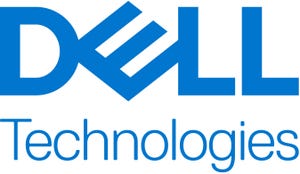Navigating the Frontier: Overcoming Challenges in the Ever-Expanding Landscape of Edge Computing
Edge computing provides a competitive advantage for companies that make it a strategic priority. Getting the most out of edge technology means understanding and navigating the particular challenges of the edge, including harsh environments and a new set of security concerns.

Edge computing satisfies the need for speed by moving computation from a distant cloud or data center closer to service consumers and data producers. As a distributed computing paradigm, edge computing dramatically reduces latency and accelerates workflows.
Gartner predicts that “[b]y year-end 2026, 70% of large enterprises will have a documented strategy for edge computing, compared to fewer than 10% in 2023.” Accenture surveyed 2,100 C-level executives and found that 83% believe edge computing will be essential to remain competitive.
The reason for this shift is that businesses must operate at speeds faster than ever. And with AI-enhanced edge computing, it will be possible to analyze data locally even more quickly to accelerate decision-making.
Edge computing differs from traditional computing models since edge servers are placed where the data is created, far from the safe confines of a data center. And while this offers the advantage of speed, the paradigm also presents its own challenges.
To leverage the full benefits of edge computing, it's essential to know how to navigate the associated physical, resource, and security concerns.
Harsh and Constrained Environments
Edge computing often happens at locations hundreds or thousands of miles away from the nearest office. This includes places like telecom cell towers, dusty manufacturing floors, or cramped retail locations (sometimes literally deployed inside a desk or closet). Clearly, this is very different from traditional servers contained in sterile, spacious, climate-controlled environments.
Given these demands, edge servers must be rugged enough to withstand bumps, temperature changes, dust, and other environmental hazards, and these servers undergo special physical protection testing. Careful consideration must be given to what's needed to deploy, manage, and update edge servers in many locations—some of which may be hard to access. Edge equipment must be more compact than traditional servers to fit into tight spaces and smaller racks. At the same time, these compact edge servers must be powerful enough to reap the efficiency benefits that make edge computing worthwhile.
Software that can remotely monitor servers provides a significant advantage when establishing a distributed edge network. Design elements can also make or break server access and maintenance issues. For example, front-facing I/O ports can be a huge time saver, especially when equipment is housed in cramped spaces.
Edge Scalability
Choosing edge servers that can be easily scaled as your business grows is vital. Once you've invested the time, funds, and effort to deploy a system, the last thing you want to do is rip out the old servers to redeploy new ones.
Scale at the edge is vastly different than in a data center or cloud. In the data center, you might have thousands of servers in one place, but at the edge, you can have a handful of servers at thousands of disparate locations. It's unlikely you'll have onsite IT experts at every site. In some cases, there may not be any personnel there at all.
Getting equipment to a location or troubleshooting onsite can be difficult due to long distances and lack of IT expertise on-location. It’s impractical to have dedicated IT staff at every site where equipment may be deployed, so technical issues that might be easy for a professional to fix in person may need to be addressed in other ways. Additionally, there's little to no redundancy at the edge, so hardware issues may lead to an extended outage until you can recover. With no onsite spares or onsite troubleshooting experts, your hardware must be rugged, reliable, and manageable from a distance.
Edge Security
Edge server security concerns are also unique. Some issues to consider include:
Physical damage or attack: The distributed nature of edge servers means they can be more vulnerable to theft, vandalism, or natural disasters. Onsite hardware should be physically protected from unauthorized access and environmental risk. It can be harder to restrict access to servers at the edge, as equipment might be placed in unrestricted locations.
Devices beyond the data center: Edge servers often interface with a network of mobile and IoT devices to provide computing power on-location. These devices come with their own potential risks, such as authentication, authorization, or firmware vulnerabilities.
Broader attack surface: In general, edge computing creates a broader attack surface that needs to be secured, between the edge servers themselves and the different devices with which they interface. With that in mind, the best security solutions for an edge computing network are specifically designed for this kind of broad, distributed environment.
Gaining an Edge
Edge computing can reduce latency, improve response times, and enhance efficiency by processing data locally. This is particularly important in scenarios where real-time processing is crucial, and emerging artificial intelligence technologies promise to boost edge performance even more.
While edge computing provides distinct advantages, it also presents unique challenges. Those who can skillfully address these issues will move forward faster to fully reap the benefits found at the edge.
Bill Pfeifer is the Edge Messaging and Thought Leadership Director at Dell Technologies.
About the Author(s)
You May Also Like






